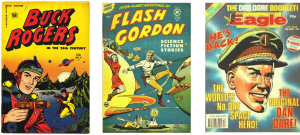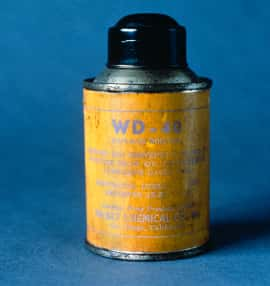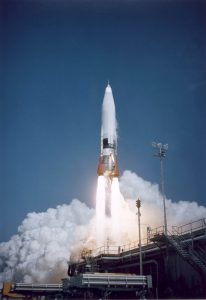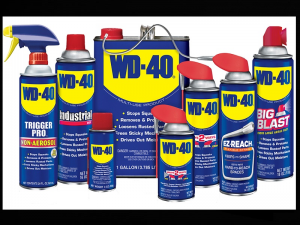Like water off a rocket’s back

Even before WWII, The “Space Age” was an established genre in fiction and popular culture. Buck Rogers made his first newspaper appearance on January 7, 1929 and the Flash Gordon comic strip was first published on January 7, 1934,
However, after the end of WWII, things really started to take off in the aerospace industry – both metaphorically and literally – as new technology, missiles and rockets were being rapidly developed allowing people to fly further faster.
In 1950 the UK got in on the space hero act with the first appearance of Dan Dare in the Eagle comics, soon to be followed by a daily dramatized version on Radio Luxembourg
Perhaps partly inspired by these three superheroes, but also recognising a potential gap in the market, three friends, Norman B. Larsen, Gordon Dawson and John B. Gregory, launched the Rocket Chemical Company on September 23, 1953.
What the three men saw was that while incredible new machines were being invented they were all made of metal, and metal rusts, so if they could come up with a chemical compound that would keep the newly invented rockets and missiles from rusting it should be a winner.
Chief Chemist, Larsen knew that the secret would be to find a substance that could displace the water, stop it from clinging to any of the many metal surfaces’ rockets had. The aim was to get the water to roll harmlessly away, like water off a duck’s back.
The three men set to work developing new compounds and testing them. None of the first ten showed any promise. The next ten weren’t much better. Still no luck by the time they reached thirty. They kept going but then with formula forty they finally found something which worked beautifully. However they had not only created a successful compound but found their brand name – ‘water displacement, fortieth attempt’ or WD40 for short.

The first company to use WD-40 commercially was, as the founders’ had hoped it would be, a real ‘rocket’ company. Convair, an aerospace contractor bought it to protect the outer skin of the Atlas Missile.

As sales grew so did the uses. Workers at the factory started to take samples home and applied it all around their homes, using it as a protectant, solvent, and all-purpose lubricant.
By 1955, Larsen and the team realized they might have a market for their compound that was much broader than the aerospace and defence industry. It led them to develop an aerosol can version.
In 1960 the company had more than doubled in size, growing to seven people, who sold an average of 45 cases per day from the trunk of their cars to hardware and sporting goods stores in the San Diego area.
A year later the first full truckload order for WD-40 was filled. It was for a special event and required all the employees to came in on a Saturday to produce additional concentrate. It was all for a good cause though the WD40 was used to recondition flood and rain damaged vehicles after Hurricane Carla had struck the U.S. Gulf coast.

Nowadays it’s an iconic brand with that market, and the yellow and blue can is found in 75% of American households.
It’s known as ‘the can with a thousand uses’ and while many are obvious a couple of the lesser known instances include when a bus driver in Asia used WD-40 to remove a python, which had coiled itself around the undercarriage of his bus and when police officers used WD-40 to remove a naked burglar trapped in an air conditioning vent!